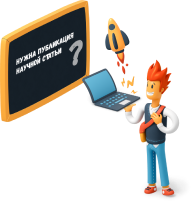Pedagogy at the present stage focuses on the personality of the student, pays attention to its formation and improvement. The formation of a personality is achievable in a situation of full cooperation between the teacher and the student, the establishment of an equal dialogue between them, as well as through creative activity, which can be attributed to the game. The key rule of pedagogy is that for learning to be effective, the child must take an active part in the process, be involved in it.
Game technologies are a modern and unique phenomenon in the pedagogical process, which allow you to effectively organize and plan the work of a teacher and a student, making the learning process exciting and interesting for both parties.
“A game is an entertaining and entertaining activity aimed at reproducing and implementing a social skill” [1, p. 26].
With the help of games, self-improvement of the student's personality takes place, possible ways of behavior in certain situations are projected.
It is rare to use gaming technologies in the educational process. However, when a teacher uses this kind of lesson technology, it allows you to combine emotions and rational activity into a single whole.
The game is a natural form of learning and therefore, using gaming technologies in the classroom, the teacher relies on the natural needs of students. The game allows you to achieve a balance between adulthood and childhood. Every game has its own world, its own reality. Along with work, communication and learning, the game belongs to the main types of human activity.
The main goals of pedagogical games can be called:
1. Expanding horizons, activating cognitive actions, building knowledge and skills, promoting the assimilation of educational material, the ability to quickly evaluate the result.
2. Assistance in the formation of attention, the development of memory, work on speech, the ability to compare, make the right decisions. Didactic game contributes to the activation of the child's creative abilities, his imagination and fantasy.
3. Formation of moral rules and ideological attitudes.
The game performs the following functions (according to O. V. Pryazhnikova):
"one. Education - the formation of general educational knowledge and skills;
2. Communication - cooperation, collective work, during which close interpersonal relationships are established;
3. Entertainment - the transition and transformation of a lesson from a process that is monotonous and not always interesting for schoolchildren into an entertaining action that requires all its participants to be fully involved and actively participate;
4. Development - the work of the imagination, the activation of the imagination of students
5. Relaxation - emotional and psychological relaxation necessary to relieve stress in the learning process
There are various classifications of games in numerous literary sources.
Turning to the classification of games developed by G.K. Selevko, the following types of gaming activities can be distinguished: "intellectual, educational, training, generalizing, cognitive, educational, productive, creative, communicative, role-playing, business, didactic, theatrical diagnostic games" [3,p 123].
If the teacher, in preparing the game for his lesson, adapts it to a specific class, the game will give its result. To do this, the teacher must follow the following algorithm:
1. Select all possible games that correspond to the topic of the lesson, taking into account the characteristics of the class (age, gender, psychological state of children, etc.)
2. Decide and choose how to conduct the game: devote the entire lesson to the game or take only part of the lesson (introductory, main or final)
3. Match the goal of the lesson with the goal of the game.
4. Prepare the necessary material, without which the game is impossible or difficult (video, articles, photographs, cards, etc.).
5. Analyze the weak points of the game and think over all possible outcomes of the game, exclude the possibility of such outcomes of the game in which its goal and result will not be achieved. [2, p 98].
The game process should be divided into structural blocks:
1. Explaining the theme of the game, introducing students to the content, demonstrating additional materials that will help them in the game.
2. Explaining the rules of the game. At this point, the fact that the teacher must explain all the points that the students themselves did not understand should be highlighted.
3. The process of the game itself.
4. Summing up [3, p 2].
Gaming technologies refer to active and interactive learning, which makes it possible to implement a system-activity approach, focusing on the Federal State Educational Standard for Basic General Education. Educational games are not a universal tool; games should be used in tandem with other methods.
The use of gaming technologies in the practice of teaching helps to increase the effectiveness of the lesson, the cognitive activity of students, with such an organization of the work of the teacher and students, even passive students will be included in the lesson.
Список литературы
- Selevko, G.K. Pedagogical technologies based on activation, intensification and effective management of UVP. - Moscow: Research Institute of School Technologies, 2017. - 288 p.
- Kuznetsov, I. N. Information: collection, protection, analysis. Textbook on information and analytical work / I. N. Kuznetsova. - Moscow: OOO Izd. Yauza, 2001. - URL: https://clck.ru/JtTxK (date of access: 11/24/2021). – Text: electronic.
- Komarova, I. V. Technology of design and research activities of schoolchildren in the conditions of the Federal State Educational Standard. - St. Petersburg: KARO, 2015. - 128 p.



